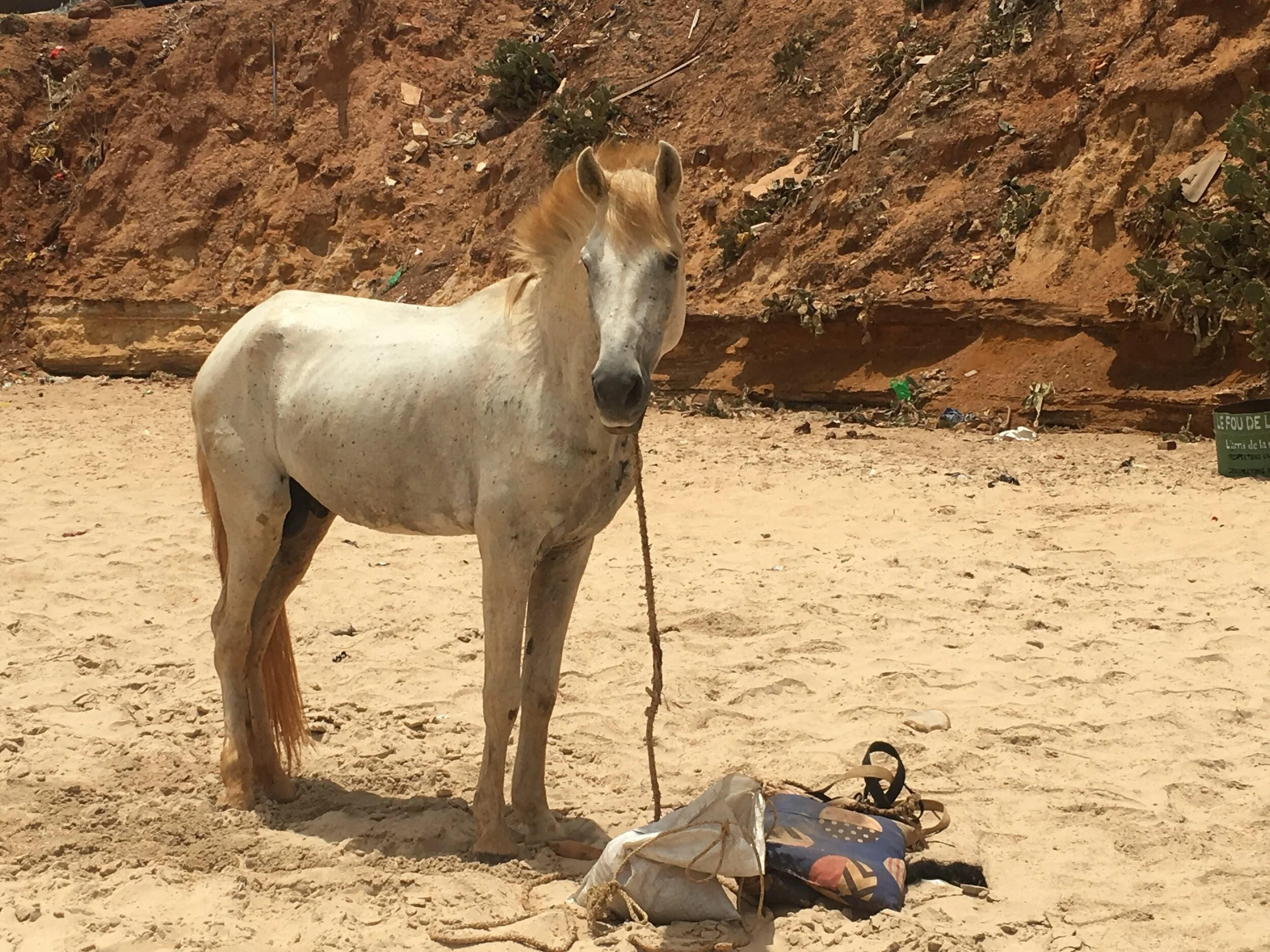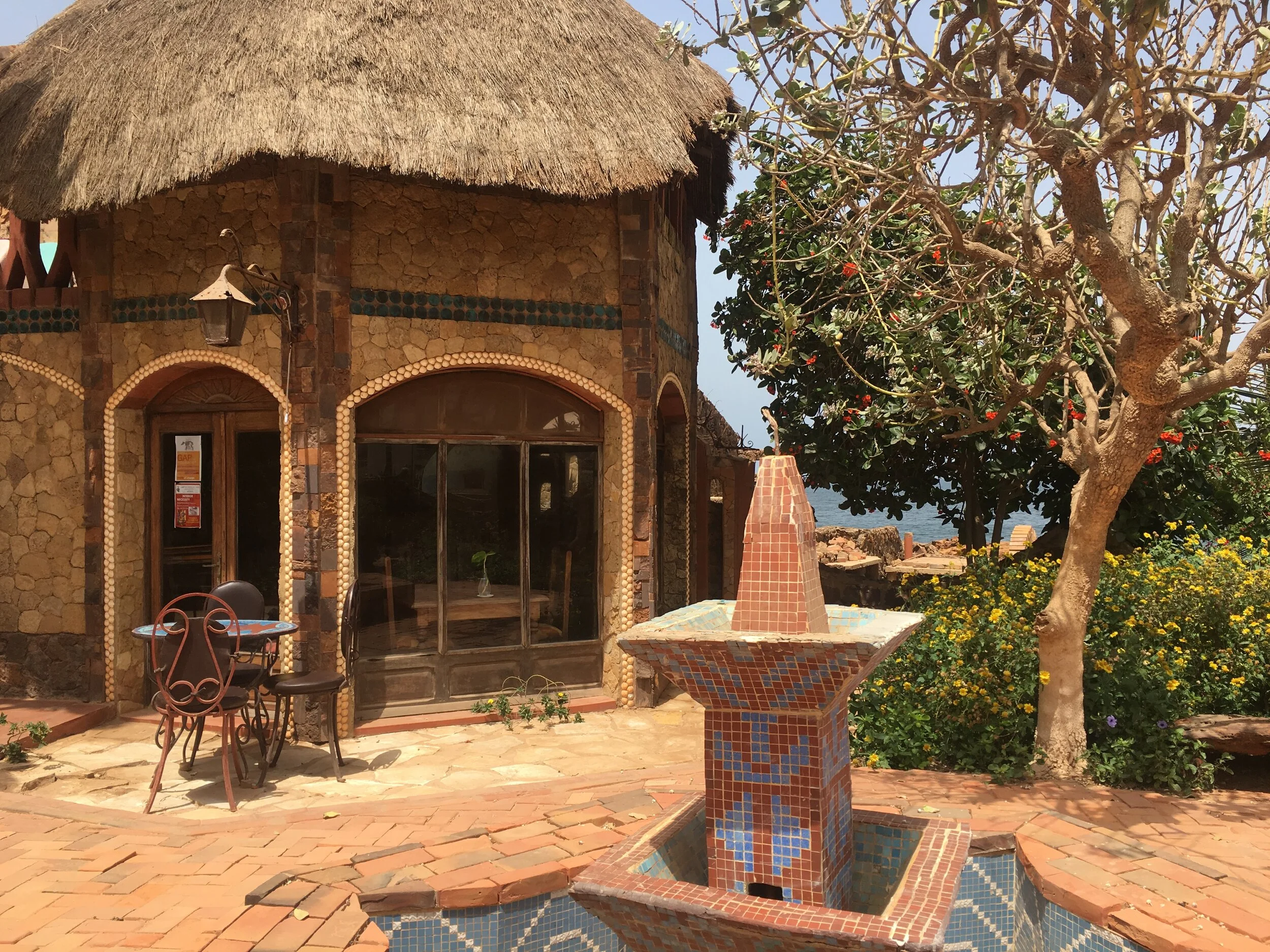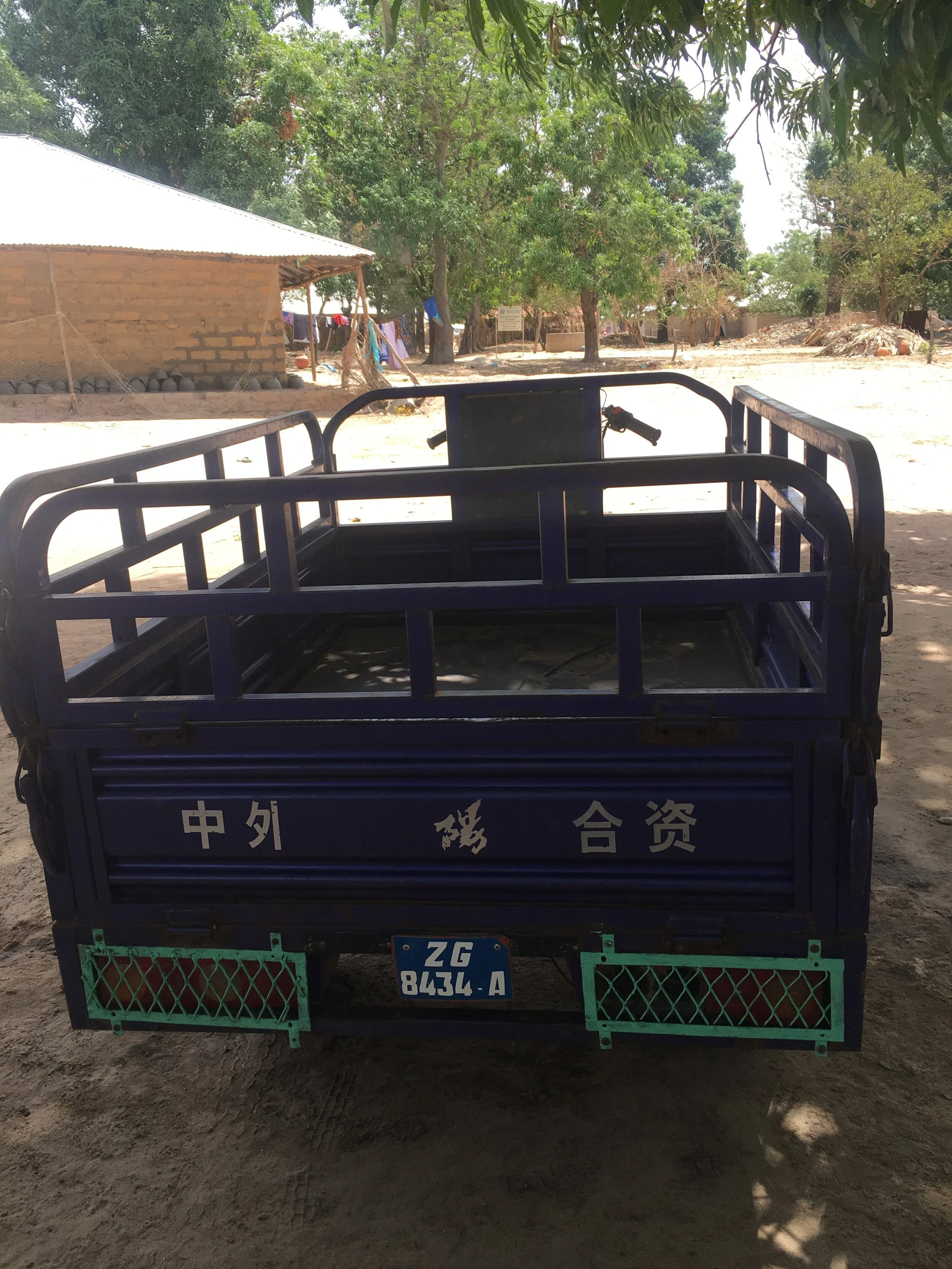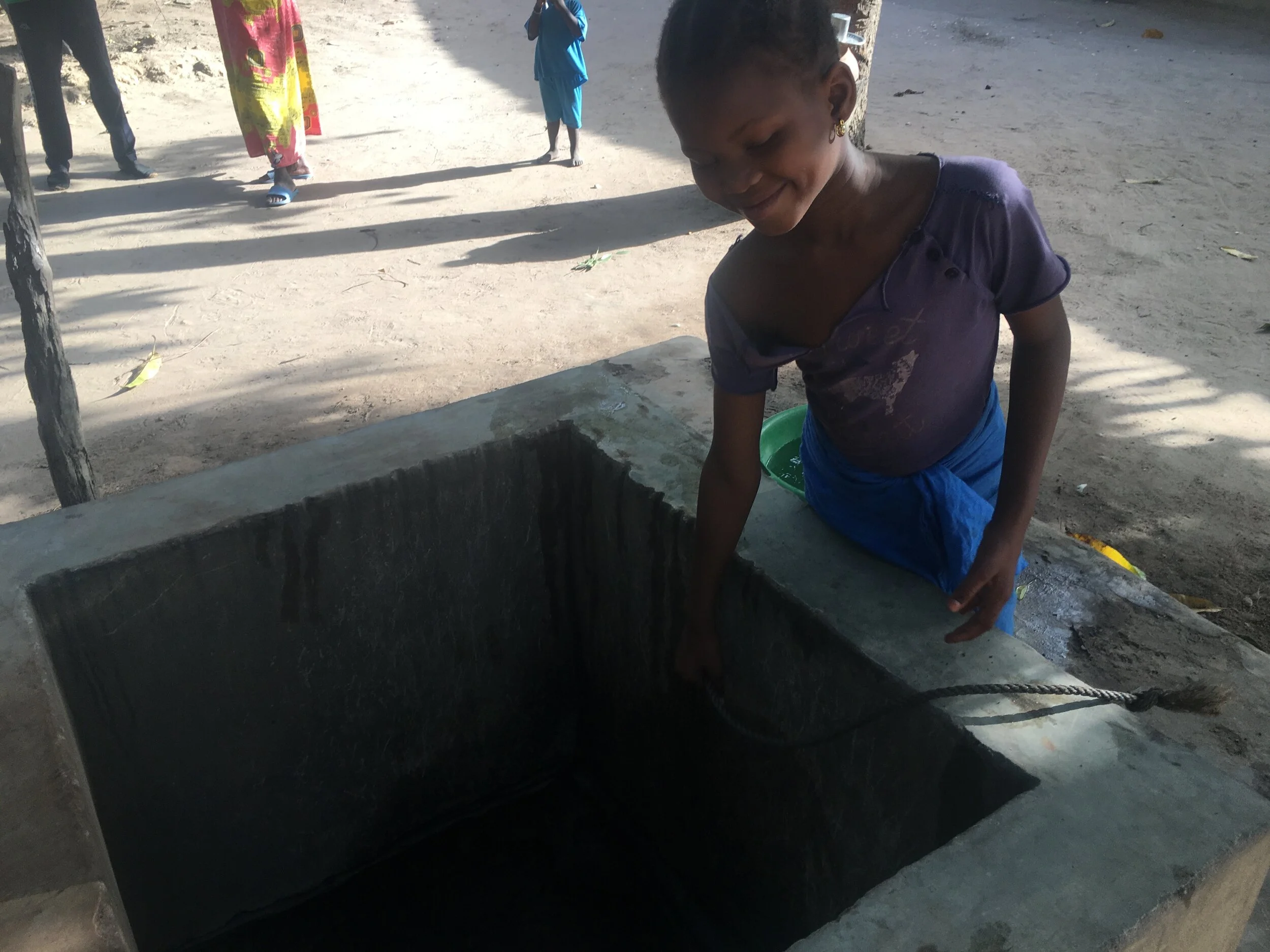Senegalese Live Stock
Humans and their animals occupy the same space in Senegal. I stepped in my flip-flops though sandy beaches covered inn sheep dung, avoided horse excrement in the street and even got guano on me from the fruit bats that live in the trees above the cafe tables at the French Culture center in Ziguinchorr.
A horse stands on the beach in Toubab Dialaw.
A Islamic holiday, Eid al-Adha, is coming up August 11 and all the families who could afford to raise a sheep this summer will slaughter it for the festival, which commemorates Abraham’s willingness to sacrifice his son for God. In St. Louis, rams were staked by their legs to the ground and some had their horns sawed off. The ewes and lambs often lived in small pens. The goats and their kids nearly always ran free.
Tied-up sheep graze in St. Louis.
At Toubab Dialaw we saw a man pulling his sheep on a leash to the surf. He scrubbed it with sand and then rinsed it in the salty water. The sheep didn’t seem too happy about his bath, but as we were told, a family’s wealth is not in the bank, it’s in their livestock, so a clean and healthy sheep is a retirement account and a rainy day fund.
A sheep hangs out under the eaves of a house in Casamance.
We never see goat on the menu. We understand that pork is uncommon in the predominately Muslim country and only eat it once, at a pizza joint run by an Italian couple in Dakar. It seemed like the entire Italian ex-pat community hung out there. They made a nice tiramisu as well. But otherwise, no pork, no problem. It’s the lack of goat meat that’s confusing. The Senegalese people we talk to confirm that people do eat goat and not infrequently but they draw a blank when we ask why it’s not listed on the menu.
Every once in a while we see some guinea fowl hanging out with the chickens or ducks. Their distinctive black and white speckled feathers and red crests makes them stick out. We don’t eat any, nor do we see any offal or insects for sale at the markets.
A horse and cart drive by the fish market in St. Louis.
On the drive from Toubab Dialwa to Dakar, a dead sheep was lying on the side of the high way like road kill with it’s legs sticking strait out from it’s body. I’m surprised we haven’t seen any dead cats or dogs as packs run through the streets, fighting over scraps and eating garbage. Many of the dogs’ ears have been bitten or torn off. Some of the cats are so small and skinny it’s hard to judge if they’re still kittens or full grown.
Cattle with long horns that are used to make lacquered handicrafts live in abandoned lots, and on the beach. I don’t know what they eat as we’ve seen an utter lack of grass in Senegal. Some are staked by their feet, others are given permission to run free. Milk and cheese aren’t on many menus so I assume these cows will be slaughtered for beef. Some have ear tags, others are painted or branded. One Senegalese man we talked to said people just look at the markings on the coat and know which animal is theirs. We are reminded again and again that people don’t steal from each other, that Senegal is an honest place. I’m invited several times to the feast in August. I won’t be around but it’s nice to think that what little people have, they’re willing to share.









